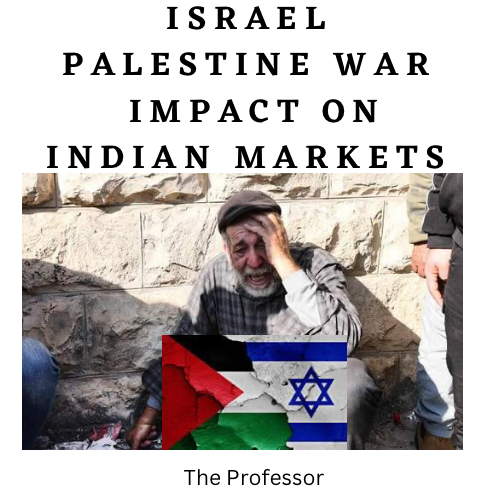
The Israel-Palestine conflict is one of the most long-standing and complex conflicts in the world, and it has significant implications for the global economy and financial markets. The conflict has had a direct impact on the economies of both Israel and Palestine, as well as on the economies of neighboring countries and the global economy as a whole.
In this article, we will explore the impact of the Israel-Palestine conflict on the Nifty index, as well as the reasons why the conflict continues to persist.
Impact of the Israel-Palestine Conflict on the Nifty Index
During times of heightened conflict in the Middle East, particularly in Israel and Palestine, the Nifty index has experienced significant volatility and price fluctuations. For example, during the 2014 Gaza War, which lasted for 50 days, the Nifty index fell by as much as 4.5% during the first week of the conflict. The index experienced significant fluctuations during the conflict, with daily price swings of 1% or more.
Similarly, during the 2006 Lebanon War between Israel and Hezbollah, the Nifty index fell by as much as 7.4% in a single day. The conflict lasted for 34 days and resulted in the deaths of over 1,200 people, mostly civilians.
It’s worth noting that the impact of the Israel-Palestine conflict on the Nifty index is not always negative. For example, in the aftermath of the 1991 Gulf War, which was fought between Iraq and a coalition of countries led by the United States, the Nifty index actually rose by over 10% due to increased investor confidence in the stability of the region.
Overall, the impact of the Israel-Palestine conflict on the Nifty index will depend on a variety of factors, including the nature and duration of the conflict, the involvement of outside powers, and the impact on global oil prices and investor sentiment
Reasons for the Persistence of the Israel-Palestine Conflict
The conflict between Israel and Palestine has deep historical and geopolitical roots, with multiple factors contributing to the ongoing conflict. At its core, the conflict centers around the competing claims of Israelis and Palestinians to the same land, which is located in what is now Israel and the Palestinian territories of the West Bank and Gaza Strip.
The origins of the conflict can be traced back to the late 19th and early 20th centuries, when Zionist settlers began migrating to Palestine with the aim of establishing a Jewish homeland in the region. These efforts were supported by the British, who controlled Palestine as a mandate after World War I.
In 1947, the United Nations voted to partition Palestine into two separate states, one Jewish and one Arab, with Jerusalem designated as an international city. The Jewish leaders accepted the partition plan, but the Arab leaders rejected it, leading to a war between Israel and neighboring Arab states.
After Israel declared independence in 1948, the surrounding Arab states attacked Israel in an attempt to prevent the establishment of a Jewish state. The war resulted in a significant influx of Jewish immigrants to Israel, while many Palestinian Arabs fled or were forced to leave their homes.
Since then, the conflict has continued to simmer, with both Israelis and Palestinians asserting claims to the same land and engaging in violence against each other. The main issues at the heart of the conflict include:
- Territory: Both Israelis and Palestinians claim historical and religious ties to the land in question, which has led to a protracted dispute over borders and control of key territories such as the West Bank and Gaza Strip.
- Security: Israel has faced numerous security threats from Palestinian militant groups such as Hamas and Islamic Jihad, which have launched attacks on Israeli civilians and military targets. Israel has responded with military force, leading to civilian casualties on both sides.
- Settlements: Israel has continued to build settlements in the West Bank and East Jerusalem, which are considered illegal under international law and have been a major source of tension between Israel and the Palestinians.
- Refugees: The conflict has led to the displacement of hundreds of thousands of Palestinian refugees, many of whom continue to live in refugee camps in the West Bank, Gaza Strip, and neighboring Arab countries.
The conflict has proven to be incredibly complex and difficult to resolve, with numerous attempts at peace negotiations over the years ultimately failing to produce a lasting settlement. While the underlying issues remain deeply entrenched, some analysts suggest that a resolution to the conflict will require compromise and concessions from both sides, as well as a commitment to a negotiated solution rather than continued violence and conflict.
It took more than an hour to compose this if you read till here appreciate your patience do share your feedback 👍





